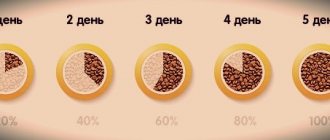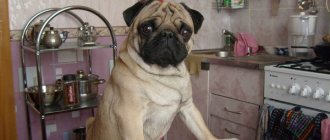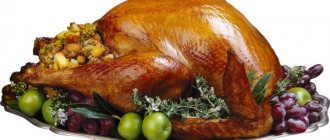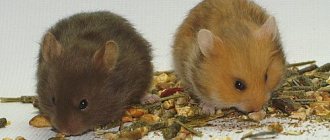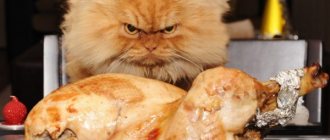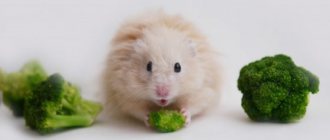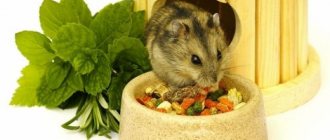In what form, what kind, can it be added to food?
Meat portions are fed raw or boiled. Heat treatment implies safety from pathogenic microbes. Food should be at room temperature (not hot, not cold); minced meat should not be given - it is poorly digestible.
Take the Attention Test! Find 10 differences! (click right here!)
Find the answer Are you bothered by some problem or question? Enter “Breed” or “Name of the problem” into the form, press Enter and you will find out everything about the issue that interests you.
Balance is achieved by combining it with cereal porridges, vegetable stews, supplementing the diet with dairy products, permitted fruits and herbs. Mixing with dry food is contraindicated; the owner must adhere to one type of feeding for the pet.
Benefit or harm
Some owners of four-legged dogs feed their dogs pasta throughout their lives and claim that everything is fine with their pets. This is probably true. Just like humans, dogs' bodies are completely different. Some can eat cones, noodles or spaghetti without any harm. But other watchdogs may experience negative consequences from eating pasta.
Well now let's look at all the pros and cons.
Let's start with the fact that the main products from which pasta is made are water, flour and eggs. It seems that these components cannot pose anything dangerous to the health of the tailed pet.
Then what's wrong with feeding dogs pasta? Why are they not banned, but at the same time not recommended for feeding?
The fact is that pasta is usually made from wheat flour. And in many animals, wheat causes an allergic reaction. This is perhaps the only danger of this product.
Therefore, if we consider the introduction of pasta into the four-legged diet from this point of view, then we can say that it is possible to give pasta to a dog.
However, there is absolutely no benefit from feeding your dog pasta. Pasta is 70% carbohydrates. And as we know, a dog’s daily menu should contain a minimum amount of carbohydrate food. A dog is a predator. The main product in a predator's diet should be animal protein (meat, poultry, fish). Carbohydrates in large quantities are not only not absorbed by the body and pass through in transit. The most important thing is that they do not carry any nutritional value for the animal’s body.
The only goal that can be pursued when offering pasta to a dog is to instantly satisfy hunger and “fill” the stomach. It is for this reason that pasta is often the main product for feeding animals kept in shelters.
Regular feeding of pasta can lead to pancreatic diseases, pancreatitis, and diabetes in dogs.
The risk of developing obesity increases. Digestive tract upset, gas formation, and bloating may occur. All these problems can arise due to the fact that the four-legged body is not able to digest carbohydrates in such quantities.
Feeding a dog pasta is not the right decision in drawing up the correct nutritional plan for the animal. If you completely exclude this product from the diet, it will bring more benefits to the four-legged body.
Can puppies and pregnant women eat meat?
For normal growth and development, protein is required, contained in meat and some other products; the need for protein in a puppy is greater than in an adult animal. Your pet's natural diet should be balanced and varied. Puppies are accustomed to solid food after weaning from their mother's milk; usually the bitch feeds the babies no longer than a couple of months. For the first meat feeding, chicken, rabbit, veal or beef are used, later the puppy is introduced to other types of food - lamb, turkey, horse meat, etc. The product is served defrosted, cut into small pieces; trimmings are absorbed by the dog's gastrointestinal tract better than minced meat. From the age of three months, large beef bones are given (necessarily raw), dogs gnaw out bone substance containing calcium and other important minerals, periodic gnawing of bones serves as a kind of teeth cleaning and prevention of tartar and plaque. From six months, by-products are added to the natural diet. The dog may have an individual intolerance to some types of meat, so new food is introduced gradually in small portions, monitoring the body’s reaction.
The nutrition of a pregnant bitch should be complete and healthy. During pregnancy, the need for various nutrients and sufficient caloric content of food increases. When feeding with ready-made food, the portions increase; when feeding with natural food, the diet is adjusted and a vitamin complex is added. Protein is important in the first stage of gestation; vegetable protein cannot replace animal protein, so meat is always present on the menu of a dog expecting offspring. At a later stage, the amount of protein received should be reduced and meat dishes limited.
Allowable dose of potatoes for dogs
Since potatoes are not very well absorbed by animals, you should not give them too much. In addition, an excess of starchy and carbohydrate products contributes to the development of obesity and diabetes. It is advisable to mix it with vegetables or food.
It is prohibited to feed potatoes:
- newborn puppies;
- dogs during pregnancy and lactation;
- pets with individual intolerance to this product.
One serving for dogs of medium and large breeds should not exceed 150 grams per week; for small dogs, 50 g is enough. Potato flour can be used - 1-2 tablespoons per week.
How to feed your dog meat correctly, how much to feed per 1 kg of weight per day, daily norm
For feeding, use lean meat, boiled or raw; it is important that the product is not spoiled. Several times a week the dogs are fed offal - liver, lungs, udders, stomachs, hearts, etc., sometimes they are given the blood of livestock, immediately after slaughter. It is not recommended to feed raw entrails to wild animals.
For different individuals, the daily intake of the product is not the same, depending on the size, weight, age, activity, state of health of the dog; a puppy consumes less food, a pregnant dog - more. The approximate daily norm is 20 grams per kilogram of pet weight, for active working individuals - 30 grams.
You should try not to overfeed your pet; although meat is the main food, it must be supplemented with other products to ensure a balanced and complete diet; you need to know that an excess of protein is just as harmful to health as a deficiency. The product does not have to be given every day; during the week it can be successfully alternated with fish or offal.
It is recommended to feed large and medium-sized dogs large pieces in order to force the animal to chew the food rather than swallow it whole; small puppies are given meat in the form of a scraper.
Foods intolerable to dogs
There are a number of foods that should not be given to a dog at all. Many dog owners have read this list, but they themselves never stop giving their pet treats. You need to understand why this or that product was included in the “black list”. After all, each of them can harm the dog’s health to varying degrees, some will lead to gastritis or the appearance of other chronic diseases, others will even lead to the death of the dog.
So, the list of harmful products:
1. All kinds of sweets : pastries, cakes, lump sugar, etc. cause lacrimation or suppuration of the eyes, and the normal functioning of the liver may be disrupted. It is worth adding here that if the dog is not very active, sugar can contribute to weight gain.
2. A large amount of salt is poison for a dog (as well as for you and me). Therefore, the food needs to be added minimally.
3. Any herbs, spices and aromatic substances , even those contained in ordinary cookies, can cause loss of smell, especially in hunting and working dogs.
4. It is strictly forbidden to give lamb and pork , given that raw pork most often contains the canine distemper virus (Pestis canum). Both of these meats cause stomach upset. They are too hard on dogs' livers. If you remember that the Yorkie’s liver is a weak point, then this point is worth paying special attention to.
5. Legumes and cereals cannot be given raw , except for rolled oats. Dogs love raw potatoes, believe me: 1 potato in one or two days will not hurt.
6. Problems also arise with milk . Dogs' sensitivity to milk sugar (lactose) is very limited. Milk can be given to a puppy up to 4 months of age. Fermented milk products: kefir (except fruit), cottage cheese and cheese are well absorbed by the dog’s body. Most Yorkies love cottage cheese. If he likes it, then give it, just not fatty - up to 5% fat content.
7. Grapes and raisins - contain an unknown toxin that is dangerous to the kidneys.
8. Onions and garlic (raw, cooked or powdered) - contain dimethyl sulfoxides and disulfides, which are dangerous to red blood cells and cause anemia. Cats are more sensitive than dogs. Garlic is less toxic than onions.
9. Cat food - usually contains too much protein and fat. If there is a cat in the house, then your Yorkie, like a very curious dog, will always strive to eat it. But remember that this is very dangerous especially for Yorkies.
The list goes on and on. So, for a Yorkie, food that causes gas is forbidden, for example, cabbage or peas, everything fatty - sour cream, fatty cottage cheese, fatty trimmings from meat. Of course, it is strictly forbidden to give spoiled food.
The most common mistake! As soon as a puppy appears in your home, he must understand that he will not be given anything from the owner’s table and must eat only from his own bowl. The beggar dog sits at the table all the time and looks at you with such eyes that a piece of food gets stuck in his throat. And when there are guests in the house... There will definitely be a kind soul who will give you something tasty according to their own human understanding. So decide whether to teach your puppy to beg. Feeding him correctly and in a timely manner is the most important thing. You need to feed the dog after all family members have eaten. This determines the dog’s place in the house and the dog will know that there is nothing to wait for during your meal.
What can you replace meat with?
If signs of intolerance to a certain type of meat appear, it is replaced with another.
Dogs are given:
- beef;
- chicken;
- turkey;
- duck;
- goose;
- rabbit meat;
- horse meat;
- venison;
- lamb;
- pork
Several times a week, natural meat is replaced with offal or sea fish.
To save their time and effort, some owners use ready-made dog food instead of natural meat, the variety of which allows them to choose food that meets the pet’s needs. There are special foods for pregnant and lactating animals, for castrated and sterilized animals, for animals prone to allergies, with sensitive digestion, etc.
How many times a day should you feed your dog?
Puppies eat very often. Immediately after birth, blind and helpless, they poke into their mother's belly, looking for the precious nipple with colostrum. Up to two months, puppies are fed 5-6 times a day, from two to four months - 4 times, from four to seven months (like young dogs) - 3-4 times. Adult dogs are fed 2 times a day - morning and evening, and in hot weather - 1 time, old dogs - 2-3 times a day. Sometimes a dog may refuse food throughout the day. If you are sure that your pet is healthy, then there is no need to panic. Your dog just had a fasting day! And he's right...
What are the benefits of meat for dogs?
The product is important for the normal functioning of internal organs and the musculoskeletal system, immunity and appearance of the animal, it is considered a source of protein necessary for the energy and health of the dog. Natural products do not contain harmful preservatives, food additives, flavors and other dubious components.
Beef rarely causes an allergic reaction, is rich in vitamins and amino acids, and contains iron, which is important for maintaining normal blood hemoglobin levels.
Among poultry meat, turkey is preferable; it contains calcium, magnesium, potassium and other important vitamins and minerals, and has few harmful fats. Turkeys are raised without the use of hormones or antibiotics.
Rabbit meat is considered a dietary product and is given to overweight dogs.
Horsemeat is easily digestible, low-fat, suitable for overweight dogs, but not everyone will like the taste, many dogs refuse it.
Venison is considered a delicacy and is a healthy food for dogs, but its cost allows not all owners to pamper their pets.
Lamb is suitable for almost all animals, is rich in B vitamins, is considered hypoallergenic, and is a good alternative to beef in terms of iron content.
Pork is given to dogs once a week in winter to accumulate fat.
Raw large bones are beneficial; by gnawing them, the dog cleans plaque from the teeth.
How to properly feed your dog eggs
Animals are fed according to their age, body weight, and needs. Adults of average parameters are fed 2 chicken eggs or 4 small quail eggs per week, small breeds - half as much.
Goose, duck, and turkey eggs are larger in size than chicken eggs, they are given less often or in reduced quantities - one piece or half a week; a part equal to an egg of another species is separated from an ostrich egg.
As an additional source of calcium, you can use eggshells, clean and crushed; they are sometimes (no more than half a teaspoon) added to the main food. The shell contains many valuable microelements; such a seasoning will serve as an analogue to a vitamin preparation and will improve the condition of not only the teeth and skeleton, but also the body as a whole.
Eggs cannot be fried; they are given raw or boiled, depending on the type of main food.
In any case, the products must be unspoiled, without bloody impurities or rotten smell. It is important not to upset the nutritional balance and not to overfeed your pet.
You should not give eggs to dogs fed dry food, or to dogs with high cholesterol levels, or those with cancer or infectious diseases.
What is the harm of meat for a pet?
Not all meat dishes are recommended for dogs. A fatty product worsens the liver, overloads the digestive system, causing diseases of the gastrointestinal tract. Pork is the least common food eaten by pets; consuming it raw is at risk of contracting infections and parasites; you should also be careful when handling unprocessed meat from wild animals.
Harmful microorganisms are also found in other types of meat that are not heat-treated; questionable products are boiled or frozen. Each owner chooses for himself whether to keep his pet on a raw diet or feed him cooked food. It is believed that a dog’s stomach produces a sufficient level of hydrochloric acid, which has a disinfecting effect, so some dog owners feed their dogs the raw product without worry. A dog can become infected with parasites or infectious diseases on the street or from contact with sick animals. In order to minimize the risk of infection, they follow preventive measures - periodic deworming and timely vaccination.
Some types of meat provoke allergic symptoms; especially sensitive individuals may find it difficult to find an alternative; owners have to switch to special hypoallergenic foods.
The product consumed as food must be unspoiled, otherwise there is a risk of poisoning - vomiting and diarrhea, indigestion, and painful condition of the dog.
How to accustom your pet to the product
Despite the fact that many dogs enjoy eating the root vegetable and consider it almost a treat, for some the product is very unattractive. There are several ways to accustom your pet to potatoes.
- Add a little raw grated vegetable to your pet's favorite food. Few people will choose barely noticeable particles of a new product from a delicacy. Over time, the amount of potatoes should be gradually increased to the norm, and then the ratio of root vegetables and other food should begin to be reduced towards the predominance of potatoes.
- If your pet does not accept potatoes in their raw form with anything or in any form, then you can try baking or stewing the vegetable, adding it crushed or mashed to food.
- Boiled potatoes, crushed with butter, with the addition of milk (in small quantities!), raw eggs or your favorite fermented milk product will not leave any dog indifferent, be it a small Yorkie or a huge Alabai.
- You can also resort to unconventional methods: many pets are able to eat anything if their beloved owner eats it. A few slices of raw potatoes will not harm a person and will help introduce your four-legged friend to a new product.
- Often, ordinary greed and envy also helps: if another dog eats a certain product with pleasure, then there is a high probability that the pet will follow the example of his comrade (or rival).
By gradually reducing the amount of by-product given to the dog with potatoes, you can teach it to eat the vegetable. The main thing is not to carry out the training process every day, otherwise digestive disorders cannot be avoided.
Potatoes with raw eggs are a treat for many dogs.
Allergy to meat in a dog
There are frequent cases of allergies in dogs to a certain type of meat. Allergic symptoms are standard and include:
- itching, rash, redness, peeling, hair loss;
- discharge from the eyes, ears, nostrils;
- swelling of the muzzle, some parts of the body, mucous membranes;
- labored breathing;
- unpleasant odor;
- frequent stool.
Any food can cause similar symptoms. Each organism has its own characteristics; representatives of the same breed have different reactions to specific foods. When introducing an innovation to the diet, it is important to monitor the pet’s condition; food that provokes allergic symptoms is excluded from the menu.
In some cases, blocking allergic symptoms requires the use of medications - hormonal, antifungal, antihistamines, antibiotics and other drugs. Drug elimination of the consequences of allergies occurs under the supervision of a veterinarian.
Pregnant and lactating
For the growth and full development of puppies, the body of a pregnant dog needs “building material”. Calcium, proteins and vitamins must be present in the daily diet. Pasta should be excluded. They overload the animal's digestive tract.
All of the above applies to nursing dogs. What the mother ate, the baby also ate.
Any flour products, without exception, can be given to animals only in limited quantities.
Noodles are no exception. Just like pasta, it is made from water and grains, and sometimes from eggs. Can cause food allergies and other unpleasant consequences. If used in small doses, it will not harm animals.
It is strictly forbidden to feed dogs dry pasta. Once in the stomach, they swell greatly and turn into a paste. They can also injure the walls of the stomach or get stuck in the throat.
It is not recommended to give your dog funchose (rice noodles). It does not have a pronounced taste, but in addition to this, it also absorbs the aromas of the products with which it is cooked. If funchose is overcooked, it will become limp; if it is undercooked, it will stick to the teeth. The animal will not benefit from such food.
What is the difference between raw, fried, boiled, dried meat for dogs
Raw meat contains more nutrients than boiled meat. The dog's digestive system easily digests meat products that are not subject to heat treatment. The negative point is that thermally untreated products can provoke infection by parasites or infection. Due to fear of negative consequences, some dog owners feed their pets only heat-treated food.
A cooked product contains less protein and other useful microelements; during the cooking process, the condition and properties of the meat change, and its nutritional value decreases. The advantage is relative safety for health. Sometimes dog breeders combine raw and cooked food for their dogs.
The animal's digestive system does not digest fried foods containing cholesterol well. Consumption of such dishes for a dog is fraught with gastritis, colitis and other diseases of the digestive system.
Natural jerky is considered a tasty treat for dogs; you can prepare it yourself or buy it at a pet store. It is not recommended to feed your pet with such a product all the time; it is suitable as a reward for following commands.
Pasta
Pasta contains only wheat and water, so it is not harmful to dogs .
If the animal is not allergic to wheat, then you can feed it pasta. But you don’t need to get carried away, because there is no particular benefit from them. Reference! Veterinarians do not prohibit feeding dogs flour products, but they do not recommend them either. They have almost no nutrients. It is better to mix pasta into a mixture of cereals for animals, which is used as an additive to boiled meat.
Benefit or harm?
High-quality pasta made from durum wheat has a low starch content. Allowed in small doses for feeding animals . Pasta retains vitamin B. It takes part in metabolism and normalization of the central nervous system.
When an animal lacks vitamin B, the muscular and nervous systems begin to suffer. The dog sharply loses weight, becomes inactive, swelling and convulsions appear. Her condition is getting worse.
Pasta also contains vitamin E , which helps muscle muscles to fully develop and maintains the pet’s reproductive function at the desired level.
Compared to humans, dogs do not need a variety of foods. The main thing is that it contains carbohydrates, fats and proteins. There should be the least amount of carbohydrates , since the animal’s digestive tract cannot digest them in large quantities.
Dough products are carbohydrate foods, so they should be minimal in the animal’s daily menu. An excess of carbohydrates can cause obesity, pancreatitis and diabetes.
Inexpensive pasta and instant pasta are poison for pets. You should not skimp on animal nutrition. Cheap pasta can get stuck between your teeth or stick to the roof of your mouth. Constipation or indigestion may also occur.
Important! Your four-legged pet's daily menu must include iron and calcium. They help the development of the skeletal system and muscle muscles of the animal. Iron is necessary for the delivery of oxygen to cells. Promotes the formation of red blood cells and energy metabolism.
Quantity and frequency
To prevent dough products from harming the health of the animal, they can be given no more than three times a week . The volume should not exceed a human fist.
What is the difference between beef, pork, lamb, chicken for dogs
Beef, due to its properties, price, and availability, is considered a classic option for feeding a pet. This is the best product for maintaining hemoglobin and contains many vitamins and minerals.
Lamb rarely causes allergies; if beef is poorly digestible, it is a worthy alternative. The dogs are fed lean cuts.
Chicken causes allergies in many dogs, but with normal digestibility it is a good addition to the main menu.
Due to its fat content, pork is not suitable for feeding dogs. Raw pig meat, compared to other types of meat, is more dangerous due to the risk of infection by parasites and pathogens.
Common mistakes when feeding dogs
Most often, our mistakes arise from ignorance of feeding requirements and daily ration norms for the normal development of the animal, as well as non-compliance with the feeding regime and, as a rule, overfeeding the dog. The main and most terrible evil that we do out of the goodness of our hearts is feeding dogs with foods that we consider tasty for ourselves, people. We give more sugar and salt than needed, even cervelat and salami. This is the best way to kill your dog.
And the most harmful thing for a puppy is bones. Bones should not be given to a baby until his dental system has formed.
The most basic rule that a dog owner should know is that the daily feeding rate is directly dependent on the amount of physical activity that the dog has spent during this time. With increased loads, the volume of food increases slightly, and with reduced loads (the dog rests or sleeps more, walks less) it decreases slightly compared to the usual daily diet.
An indicator of proper feeding is the dog's normal fatness with well-developed muscles . If your pet is healthy and is not characterized by increased activity towards food (greed), which is quite rare, then he calmly moves away from his empty bowl. If the dog continues to lick (“chase”) the bowl (maybe even bring it to you), it means that he did not have enough food.
If you notice that your dog is losing weight, then after consulting with a veterinarian about the state of his health, the total amount of food should be slightly increased. The dog's normal fatness is checked as follows: in the place where the dog's croup begins, the croup should be freely palpable, but not visually prominent. Otherwise, the dog will develop excess fat. Obesity leads to heart problems and shortens your pet's life.
Minerals are vital for both puppies and adult dogs.
Bone meal, calcium, phytin, glycerophosphate, mineral supplements, which include all the necessary components, play an important role in the formation of the puppy’s bones. You need to know and remember that for each breed the amount of mineral supplements should be different. It is best to seek advice in any club from the head of your breed section. An overdose of mineral supplements for a puppy can lead to bone fragility, which will likely result in paw fractures. In an adult dog, excess mineral supplements are washed out of the body.
What not to feed
- bakery products
- chocolate
- pork and lamb
- raw, river fish
- whole milk
- mayonnaise
- potatoes
- ice cream
- legumes
- cheese
- raw eggs, especially whites
- sausages
- potatoes
- nuts
- mushrooms
- smoked meats
- cheap, low-quality, ready-made food
- salty food
- spicy and chicken bones
- cakes, pastries and other sweets
- products from the table
Is it possible to give pasta with meat to a dog?
Can dogs eat pasta? Actually, yes. It is not dangerous or toxic, like chocolate, for example. Pasta for dogs can also be filler and provide carbohydrates. The pet needs them relatively little, but they can supplement his diet. However, spaghetti should not be the mainstay of your pet's diet. Meat is the most important thing for him, as it is a good source of easily digestible protein.
It is also better to exclude spaghetti from the diet of an overweight dog. Slower metabolic processes in older dogs can result in a poorly balanced diet causing rapid weight gain. Noodles should also be excluded if your four-legged friend is allergic or intolerant to grains, eggs and other ingredients that may be contained in pasta.
Is it possible to give noodles to a dog that has health problems? No, you should limit pasta to sick and weakened animals - they will fill you up faster and at the same time will not provide all the necessary nutrients. The pet will eat spaghetti and will not reach for more valuable ingredients.
Pros and cons of pasta for dogs
The answer to the question, is it possible to feed a dog pasta, is yes. After all, this solution has quite a lot of advantages:
- high calorie content;
- easy digestibility;
- low cost;
- ease of preparation.
On the other hand, you can often hear even from experienced breeders arguments why dogs should not have pasta. The product also has many disadvantages. First of all, it is a large amount of carbohydrates - they often lead to obesity.
Fact! Dogs should never be given raw pasta - it will swell in the stomach and turn into a paste, which will lead to constipation or volvulus.
Wheat products can cause allergies in some animals, but this mainly affects purebred dogs like Chihuahuas. If you feed your dog only pasta every day, it will not be beneficial - there is a risk of developing pancreatitis and pancreatic diseases.
The product should be given in moderation
Can dogs eat pasta? Definitely, especially for adult and large dogs who live outside or run around a lot - they burn a lot of calories, and on a cold winter night such a diet can be life-saving. But it is advisable not to give vermicelli every day. It should not form the bulk of the diet. When asked whether a Chihuahua can have pasta, like other decorative dogs, the answer will be “undesirable.” There is a high probability of developing allergies, as well as obesity, due to low mobility.
Ready-made feed
If you have chosen the method of feeding with ready-made food, then in this case you should not save money by buying cheap food. They contain low-quality products. For such dogs you need to choose premium and super-premium food. Good producers:
These companies even produce special food for the Yorkshire Terrier, which is especially suitable for such dogs. For example, Eukanuba Yorkshire Terrier. It contains beet pulp, antioxidant tocopherol, fiber, Omega 3 and Omega 6 and other beneficial microelements.
Another good dry food is ROYAL CANIN Yorkshire Terrier. It contains borage oil, which is very beneficial for wool (makes it silky).

